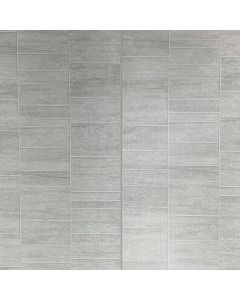Bathroom Heating Guide
When considering your bathroom heating options, staying toasty is key – but that doesn’t mean you have to compromise on style.
From period-inspired cast iron column radiators to top towel rail ideas, our comprehensive guide provides several bathroom heating ideas that’ll turn up the temperature while upgrading your bathroom’s look.
We’ll start by summarising the different types of bathroom heating solutions before answering some common bathroom heating FAQs.
Bathroom heating options
Electric towel rails
One of the most popular bathroom heating ideas, electric rails are a cost-effective, modern way to heat your bathroom while providing a luxurious warm towel when you step out of the shower.
Electric towel rails come in a variety of shapes, sizes, and colours, so you’re sure to find one that’ll complement your current décor. What’s more, your mains electricity supply gives you total temperature control via an on/off switch, cutting energy costs by not activating the full heating system.
Designer radiators
Gone are the days of installing bulky off-white radiators to fend off frosty mornings - designer radiators double up as a heat output and a contemporary focal point for your bathroom, emanating warmth and exuding style.
Their sleek, functional design makes them ideal for any size of bathroom and if it’s a bold statement you’re after, consider pairing it with a blend of traditional and contemporary elements. Think raw materials like wood and concrete, accentuated with exposed copper piping and dark frames around any glass screens. If looking to achieve this style, consider bathroom wall panels that will complement your radiators style.
Ladder radiators
Curved ladder radiators
Fusing practicality and style, curved ladder radiators comprise a series of curved bars, making it easier than ever to hang your towels. They usually feature a classic metallic finish, exuding class while maintaining efficiency as a heat source. And as they’re wall-mounted, you can make the most of the space in your bathroom.
As a side note, we recommend checking its BTU rating, too (British Thermal Unit) – the higher the BTU rating, the more heat you’ll get from it.
Straight ladder radiators
If curved ladder radiators aren’t your thing, the simplicity of straight ladder radiators may interest you. These wall-mounted heating solutions optimise the available space - and look good doing it.
Straight ladder radiators elevate almost any bathroom while leaving enough room for eye-catching accents that’ll make the room a little more you.
Traditional column radiators
Period-inspired column radiators are perfect for those seeking a traditional bathroom aesthetic. Made from traditional materials like cast iron, column radiators may take a little longer to heat up than modern alternatives like aluminium, but they hold heat long after they’re turned off, making them ideal for larger bathrooms.
Underfloor heating
Once deemed a luxury, underfloor heating is fast becoming a fixture in all types of bathrooms.
As you would expect from the name, underfloor heating heats your bathroom floor from beneath your feet. Its location at the room’s lowest point utilises heat’s natural propensity to rise, making the system arguably more efficient than a single radiator. It needn’t cost the earth either, as you can extend your existing radiator system to include an underfloor heating circuit.
Chrome
Chrome heaters add a touch of elegance while creating the illusion of extra space as it reflects light off its surface. Given their sleek chrome finish and clean, geometric lines, chrome radiators are well suited to minimalist or hotel-style bathrooms.
Dual fuel rails
Dual fuel rails are contemporary radiators heated by both central heating and an electric system. They have excellent energy efficiency and provide total control over your heating preferences. During the winter months, you can use your central heating to run it before switching to its electric element when the mercury rises in summer.
Do bear in mind that to install a dual fuel unit, you’ll need a dual fuel T-piece, a heating element, and a set of valves.
Stainless steel
Stainless steel radiators are resistant to corrosion, rusting, and staining from contact with hot water, making them ideal for even the most humid bathrooms.
Their versatility makes them a savvy choice for almost any bathroom, but they shine in minimal, contemporary designs as they tend to match the existing fixtures like taps and showerheads. Like chrome heaters, stainless steel radiators create the illusion of space courtesy of their reflective surfaces, so they're perfect for compact ensuites.
What is the best type of heater for a bathroom?
Objectively speaking, no heater is the best, and the optimal heater for you depends on your specific needs.
Firstly, the bathroom itself plays a significant role. The size of the room will dictate whether you need something compact to optimise space or a large unit to maintain heat throughout the day. However, if you’re short on space, a wall-mounted heater may be your best bet, while small electric radiators are ideal for compact ensuites and cloakrooms and handily double up as towel storage.
If you’ve got a bigger bathroom, underfloor heating will transform the room entirely – it’s a smart investment that’ll keep your toes toasty while upping the value of your property; win-win!
How do I warm up my bathroom?
Aside from installing a high-quality heater, there are several methods to warm up your bathroom while maintaining energy efficiency.
Firstly, try to ensure your window is properly sealed; the frame shouldn’t have any small holes, cracks, or gaps which can cause heat to escape and let in cold air from outside. Extractor fans are another excellent way to prevent condensation build-up whenever you’re running hot water. And if you’ve opted against underfloor heating, consider placing bathroom mats on the floor to prevent chilly toes.
As previously mentioned, check your desired heater’s BTU rating to ensure it’ll emanate adequate heat for your needs.
How can I heat my bathroom without central heating?
If you’re looking to cut costs, there are plenty of alternatives to using your central heating in your bathroom.
If you have an outdated space heater, for instance, you could replace it with an electric heater – that way, it’ll be independent of your central heating, and you’ll have total control over when it’s turned on or off.
Heat lamps are another option. They’re essentially a three-in-one mechanism for providing heat, light, and ventilation, and you can find models specifically designed for bathrooms. What’s more, thanks to their soft spotlight effect, these lamps have the bonus of creating a soothing spa feel.



























